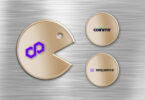The Eurosystem is currently running trials for wholesale DLT settlement in central bank money. One of the three central bank payment solutions is a wholesale CBDC using the Banque de France’s DL3S blockchain network. Today the central bank said it has conducted seven of the 19 planned trials so far.
Two of the experiments involved using a wholesale CBDC for interbank settlement of commercial bank money. The Eurosystem distinguishes between ‘experiments’ which are simulations versus ‘trials’ that use real money.
One test involved the Italian Banking Association’s ABI Lab. In 2020 it went live with a DLT solution, Spunta, that automates interbank reconciliations for more than 100 Italian banks. It now manages 200 million transactions a year and the output is the net amount that banks owe each other on a nightly basis. Subsequently it ran Project Leonidas as a wholesale CBDC trial in the Bank of Italy’s sandbox. In that case, the wholesale CBDC was used to settle the balances.
Article continues …

Want the full story? Pro subscribers get complete articles, exclusive industry analysis, and early access to legislative updates that keep you ahead of the competition. Join the professionals who are choosing deeper insights over surface level news.






